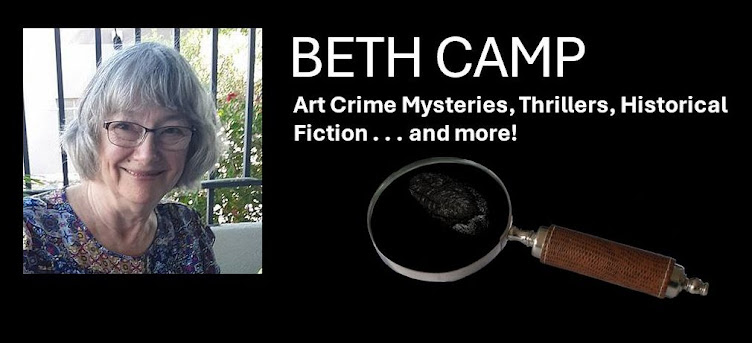Sometimes I wonder if people realize what gifts they give passersby when they plant their gardens.
As we slowly emerge from the isolation that pandemic brought, even ordinary life events can seem more challenging. At least, I've found it so as my husband recovers from surgery. So that daily walk has led me to discover some favorite spots along the way. That early blooming cherry tree has now given way to a climbing clematis, and the robins have returned, hopping their way across finally green lawns.
I'd like to tell you about a wonderful writer I know, Sandra Mason. She recently released her inspirational tale, Into the Fire! about what Big Ed Pulaski's life was like when he left home at age 15, and how he became that heroic forest ranger who saved 40 lives during the Great Fire of 1910.I would have enjoyed reading this fictional biography when I was a teen, dreaming of far horizons and adventure. I loved reading it now. Sandra has a unique gift of describing what life was truly like, and Ed Pulaski's generous spirit and work ethic comes through beautifully.
Sandra graciously answered a few questions to share with you.
1. What inspired you to write Into the Fire!? I have always loved to tell stories, and to write. Actually I’ve done more poetry writing than longer stories. Into the Fire! is my first historical novel. And my first real book. I was researching the Pulaski tool for another project, and investigated the U.S. Forest Service Website.. I happened on an essay written by Edward Pulaski titled “My Most Exciting Adventure as a Forest Ranger.” It was very short, only about a page. I was captured by his adventure and thought “We have a real hero in our own back yard.” I was so inspired that I had to tell his story!
2. What kind of research went into writing this book? First, I explored the U.S. Forest Service website for anything I could find about the 1910 fire and Edward Pulaski. Then I made an appointment to visit the Forest Service Idaho Panhandle National Forests Headquarters in Coeur d’ Alene, Idaho. They kindly allowed me access to their archives. Shawn Gibson, Forest Archaelogist, patiently walked me through the mountains of material they had on the 1910 fire. Then she turned me loose to explore on my own. I also did quite extensive reading about the 1910 fire, particularly Fire in America, by Stephen Pyne and The Big Burn, by Timothy Egan.
I also visited Wallace, Idaho, particularly the Wallace Mining Museum. My husband and I hiked the interactive trail to the War Eagle Mine Tunnel where Ranger Pulaski and his men sheltered from the fire. It was an educational, inspiring, and beautiful hike. I researched railroad firemen, steam engines, horse shoeing, mule trains, mining, Buffalo Soldiers, Senators Heyburn and Clark, Joseph Gurney Cannon, Speaker of the House, President Theodore Roosevelt, Gifford Pinchot, first head of the U.S. Forest Service and others. The whole process was fascinating.
3. Any surprises along the way? I was surprised and delighted with how helpful the keepers of Idaho history were. They were generous with stories and ideas. I hope to introduce many others to the brave men of the U.S. Forest Service and firefighters in general. Now both men and women do that work.
4. What advice do you have for aspiring writers? Believe in your story, do your research, listen to other writers. And NEVER give up!



Thanks for sharing, Beth. It’s a fascinating story. I wonder why Sandra decided to make it fictional? Have a wonderful, mask-free summer. I hope your husband is recovering well. Happy weekend!
ReplyDeleteThanks, as always, Liesbet, for stopping by. Sandy wrote this story as a fictional biography because literally nothing is known about how Ed Pulaski got from his home that he left at the age of 15 to those mines in Idaho! But she told me she was greatly inspired by his character and other writings. Really an interesting project! And I hope your summer is equally wonderful, on the road, and mask free!
Delete